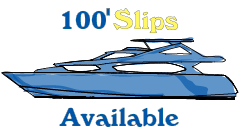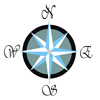Marine Communications, VHF Radio or Cell Phone?
 Make sure you can be heard. Most of us carry our cell phones every where we go. And they are handy in most situations, like contacting people on land. But what about contacting other boaters or the Coast Guard? Unless you have their numbers handy, that’s not going to work. And in an emergency situation, you want to make sure you can be heard!
Make sure you can be heard. Most of us carry our cell phones every where we go. And they are handy in most situations, like contacting people on land. But what about contacting other boaters or the Coast Guard? Unless you have their numbers handy, that’s not going to work. And in an emergency situation, you want to make sure you can be heard!
Cell Phones…
- Are great on land, but not so much on the water. Not always waterproof.
- You’re unable to broadcast to other boaters in case of an emergency.
- A cell phone range is shorter in the water, than on land.
VHF (very high frequency) Radio…
VHF radios are the primary means of communication for most vessels. They should also be your primary device in case of an emergency, not a cell phone.
- Distress calling and safety
- Ship to shore communications
- Navigation
- NOAA Weather Broadcasts
Why VHF…
- VHF radio can be your lifeline.
- They are monitored 24 hours a day, seven days a week in Coast Guard jurisdictions.
- The VHF signal can be tracked by Vessel Assist towers to help locate your boat.
VHF radios have many channels, a very important one is, Channel 16, it is designated as the national distress, safety and calling frequency. It’s also monitored by the Coast Guard. For a listing of all channels go to U.S. Coast Guard Navigation Center.
Basic use rules…
- A VHF radio is not a phone, so don’t use it like one.
- Channel 16 should only be used for emergencies. It’s a good idea to monitor Channel 16, but not required.
- It’s unlawful to intentionally transmit a false distress alert.
Calling for help…
There are procedures to follow in emergency situations. Here are 3 safety phrases, just in case.
- Mayday – A distress signal that requires an urgent response. A person or boat is threatened by grave or imminent danger.
- Pan-Pan – To signal urgent information. Used when the emergency isn’t immediately life threatening.
- Securite – A safety signal. Used to transmit information about the safety of navigation.
To send out a distress call, turn on your VHF (if not already on), turn to Channel 16, press the talk button and say one of the above 3 times, along with your position and the situation.
Hopefully, these tips help you prepare, in case of an emergency. It’s always good to be prepared and not need it, then the alternative. BE PREPARED, MAKE SURE YOU ARE HEARD and SAFE BOATING!
For more information regarding Marine Communications go to www.boatus.org/marine-communications/
Source: www.boatus.org/marine-communications/



